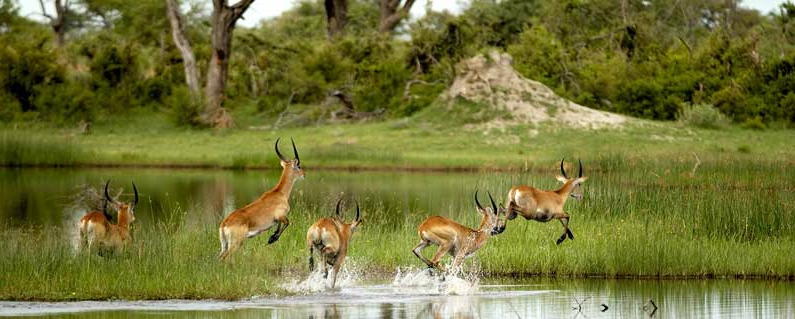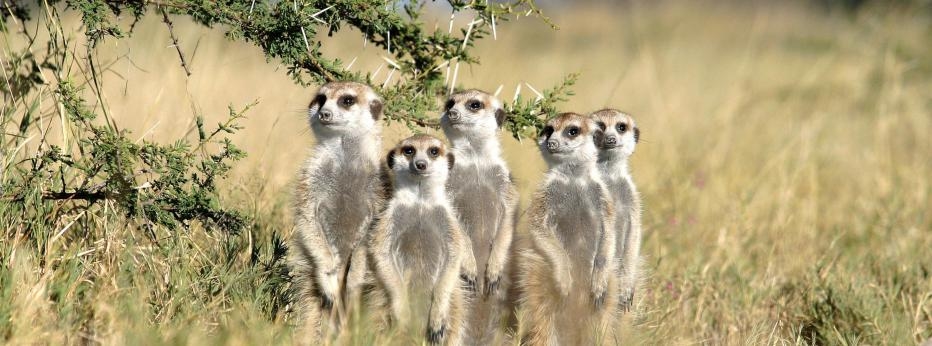Botswana Wildlife Highlights ~ Botswana’s wildlife is as rich and varied as its diverse terrain. From the plains of the Kalahari to the waterways of Linyanti, Botswana’s many different habitats are host to a vast array of species. Here we highlight just a few of our favourite of Botswana’s wildlife attractions, with special emphasis on those that are unique to the country.
The world’s largest population of elephant
Botswana boasts the world’s largest population of elephant. In fact, it is quite possibly the world’s only expanding elephant population. As elephant numbers sadly continue to dwindle year on year across Africa as a whole, in Botswana, thanks to conservation and anti-poaching efforts, the species thrives and is today one of the country’s greatest wildlife attractions.
Most of Botswana’s elephants are concentrated in the north of the country, particularly Chobe (which sustains as many as 50,000) and Linyanti on the edge of the Okavango, though they are also found in the Kalahari and in southern regions of the country (it might be easier to just say that elephant are found almost everywhere in Botswana!) The best time to see the huge herds of elephant for which Botswana is famous is during the dry season, when they gather around the waters of Chobe and Linyanti in prodigious numbers, before dispersing into the forests and bush during the wet season. Groups of up to 50 or more are not an uncommon sight at this time of year (and what a spectacular sight!)
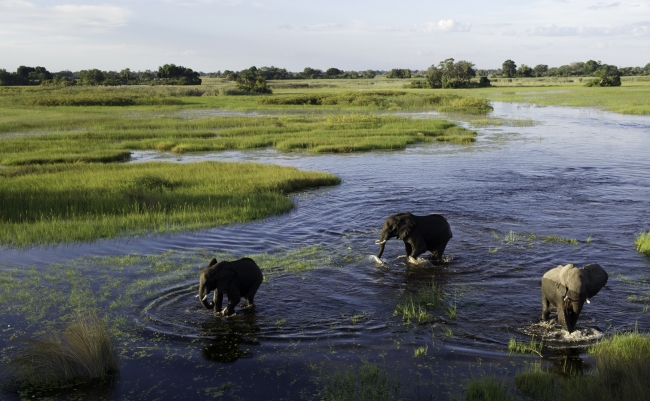
Makgadikgadi-Okavango zebra migration
The second largest mass migration of zebra in Africa, exceeded only by the Great Migration of the Serengeti and Masai Mara, takes place in the Makgadikgadi Pans on the outer edge of Botswana’s Kalahari Desert at the beginning of every year, and sees 25,000 zebra migrate as far as 580km in search of water and fresh pasture. This spectacular sight is one of Botswana’s best-kept secrets, which, taking place as it does in the wet season, is missed by most visitors to the country. Predators are always in attendance, but very few people – here you can witness the zebra migration in peace, free from the hustle and bustle that often accompanies the Great Migration. You can get very close to the zebra movements; amateur cowboys can even try their luck tracking the moving zebra at a distance on horseback – a fantastic adventure!
For more on Botswana’s zebra migration, including some fantastic images, see the Zebra Migration research website at http://www.zebramigration.org.
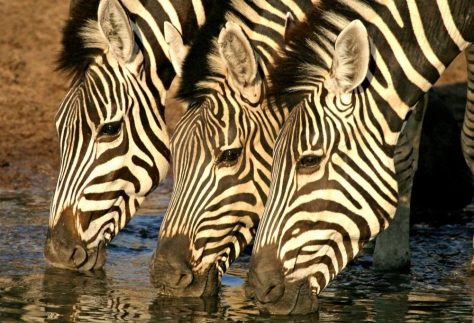
Africa’s last remaining wild dog
Botswana is one of the last strongholds for African wild dog. You have a greater chance of spotting this most elusive of creatures in Botswana than anywhere else in Africa, though even here their numbers are limited and sightings are still relatively rare. Wild dog need vast open areas in order to hunt, and the combined areas of Chobe and Okavango in the north of the country provide the perfect territory for them. Sightings are particularly good in Moremi reserve and in the Linyanti region between Chobe and the Okavango proper. The dogs move at great speed, and rarely settle for long in any given area, making them especially hard to track, but a number of camps and rangers in this region specialise in wild dog tracking.
Other rare and endangered species that have made a home in Botswana include sitatunga, red lechwe, the brown hyena, and…
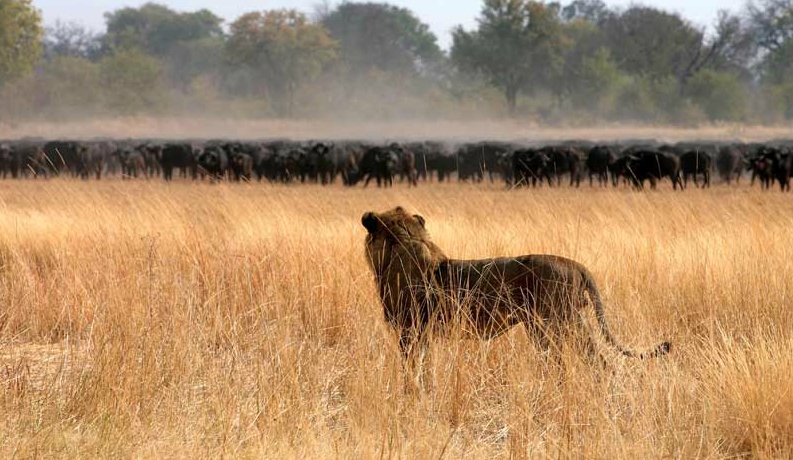
…the black-maned Kalahari lion
Endemic to the Kalahari, the black-maned Kalahari lion is distinctive not just for its beautiful black mane, but also its greater bulk and its more solitary behaviour (Kalahari lion usually form smaller prides than East African lion). The Kalahari lion is likely descended from the now-extinct Cape lion, with which it shares its black mane, but is notably distinct from the East African, or Masaai lion. There are different theories as to the function of the darker mane, but many believe that it retards heat loss thus keeping the lion warm during the cold desert nights. Whatever it’s purpose, its distinctive appearance gives the Kalahari lion a uniquely majestic aspect!
Meerkats of the Makgadikgadi Pans
The simple meerkat might not be the first animal that leaps to mind when you think of a safari to Botswana, but many G&M clients return home with especially fond memories of these gregarious creatures, and they are certainly among our favourite Botswana wildlife attractions. These beautiful animals are a common fixture of the Makgadikgadi region of Botswana, so common that, in the dry season, when the zebra and flamingo are absent, it’s easy to imagine that the troops of meerkat that stand and march in proud formation over the empty pans have claimed this most infertile of lands entirely for themselves. They are in fact among very few permanent residents in the region, where, alongside their relative the mongoose, they eke out a living hunting insects, mice, and other small game.
The Makgadikgadi meerkats are remarkable for their sheer numbers, as well as their remarkable ability to survive such inhospitable conditions. A small number of meerkat clans in the vicinity of Jack’s Camp, on the edge of the Makgadikgadi Pans, have been habituated to people; it’s possible to visit their burrows where, if you sit very still, the troop might mistake you for a lookout post!
To read our earlier blogs on Botswana, click the Botswana tag. We’ll be publishing more articles on Botswana throughout May. Look out for our upcoming blogs on our favourite of Botswana’s camps and lodges.
